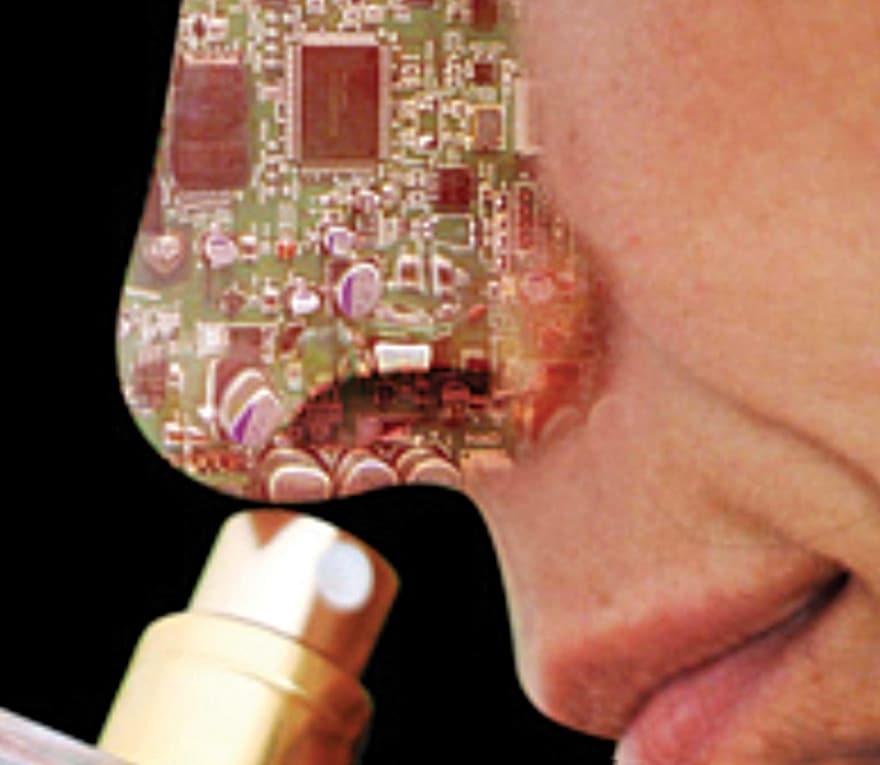An electronic nose, also known as an e-nose, is a device that identifies different smells and odors by analyzing chemical compounds in the air using an array of gas sensors. It works similarly to how humans detect smells when compounds interact with receptors in the nasal cavity. The e-nose mimics this capability through sensors and pattern recognition systems.
History and Development
The concept of an electronic nose originated in the early 1980s when scientists tried finding a way to electronically detect odors. In 1982, two American researchers called the device an “electronic nose” for the first time. They developed a sensor array made of conducting polymers and transistors that responded to different odors. Since then, extensive research has been conducted over the past few decades to improve the design and capabilities of e-noses. Nowadays, electronic noses are highly sensitive and can identify a wide range of scents from food and drinks to chemicals and gases.
Working Mechanism
An e-nose consists of three main components – a sample delivery system, a sensing system, and a pattern recognition system. The sample delivery system introduces the odor sample into the device. The sensing system contains an array of chemical gas sensors, each targeting a specific property of the odorants. As compounds interact with the sensor surface, it causes a change in some chemical or physical property which is recorded by the device. The pattern recognition system uses machine learning algorithms to analyze the response patterns from all the sensors and recognizes familiar odors based on a trained database of scent signatures.
Types of Gas Sensors
Commercial Electronic Noses typically use metal oxide semiconductor (MOS) sensors due to their low cost and high sensitivity. Other commonly used sensor types include conducting polymers, quartz crystal microbalances, surface acoustic wave devices, and carbon nanotubes. Each type of sensor responds differently to different chemicals based on properties like conductivity, mass change, or frequency shift. An array consisting of multiple sensors enhances detection capabilities since various odorants produce unique response patterns across the array.
Widespread Applications
Electronic noses have extensive uses in fields like food and beverage testing, environmental monitoring, medical diagnostics, security applications, and more. They are used to check food quality, detect spoilage, and identify bacterial contamination or authenticity. E-noses monitor air quality by detecting hazardous or flammable gases. Medical scans use them to detect diseases from a patient’s breath odor. They are also deployed at airports and public places for security scans by identifying explosives, drugs, or contraband materials. Overall, electronic noses provide a fast, sensitive, and cost-effective solution for odor analysis across many industries.
Food and Beverage Inspection
One of the major applications of electronic noses is in the food and drink sector. It aids numerous quality control tasks like freshness testing, shelf-life assessment, and authentication of products. E-noses examine raw materials, monitor food processing, and inspect final packaged goods. They identify food spoilage, check meat and fish for bacterial contamination, and detect counterfeits or adulteration. Wineries use them to grade wine barrels and ensure consistency between batches. Breweries analyze hops and monitor the brewing process. The dairy industry checks for off-odors in milk.
Environmental Monitoring
Electronic noses are increasingly employed for environmental monitoring as well. They continuously sample air, water, or soil to detect harmful or toxic gases, volatile organic compounds (VOCs), and chemical pollutants. E-noses monitor leakages from landfills, emissions from industries, indoor air quality, and help identify the source of contaminants. They aid in resource exploration by smelling for natural gas, oil, or minerals. Environmental agencies employ them for pollution mapping and control. Overall, electronic noses provide early detection of hazardous emissions and help regulate air and water quality.
Medical Diagnostics
The medical field has started leveraging the odor-detecting capabilities of e-noses for diagnostic applications as well. Researchers are developing devices and algorithms that can identify diseased tissues, screen cancers, and detect biomarkers of illness from a patient’s breath. Electronic noses have shown promise in early detection of lung cancer, breast cancer, diabetes, tuberculosis, and urinary tract infections. Some studies reported sensitivity and specificity rates comparable to existing medical tests. Non-invasive odor profiling using e-noses could potentially complement other tests and aid faster diagnostics. More research is ongoing to commercialize such applications and gain regulatory approvals.
Advances in Fabrication
Over the years, major advancements have been made in fabricating high-performance electronic nose systems with increased sensitivity, selectivity, and reliability. Miniaturized sensors allow developing portable handheld devices. Use of nanomaterials like graphene, carbon nanotubes, and nanoparticles enhances sensor response by orders of magnitude. Integrating MEMS fabrication and 3D printing enables producing low-cost, disposable sensor arrays. Combining e-nose, Gas Chromatography (GC), and Mass Spectrometry (MS) provides detailed odor identification capabilities. Development of advanced machine learning algorithms improves odor recognition accuracy. Overall, e-nose technology continues to evolve rapidly with innovative designs and techniques finding new applications every day.
*Note:
1. Source: Coherent Market Insights, Public sources, Desk research
2. We have leveraged AI tools to mine information and compile it




